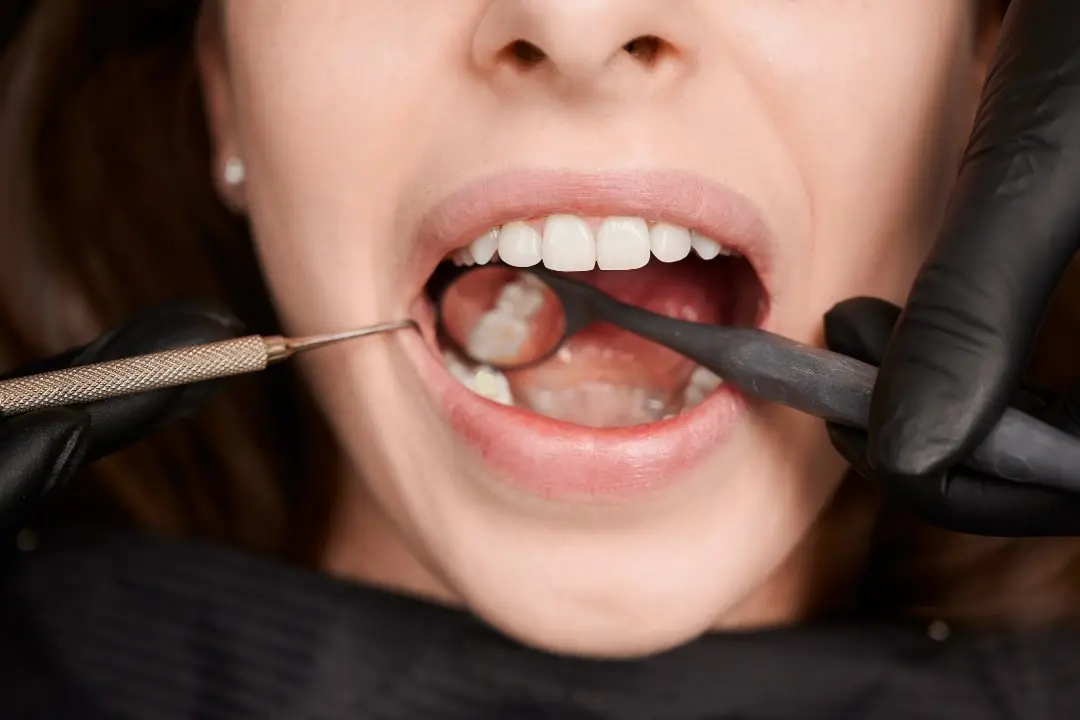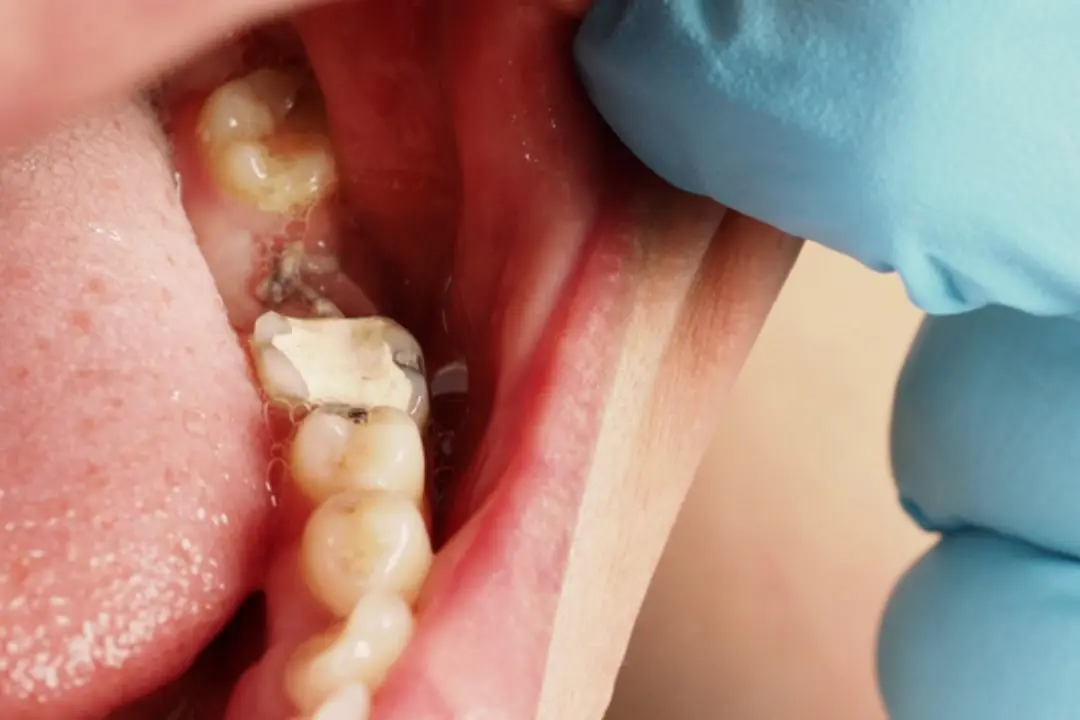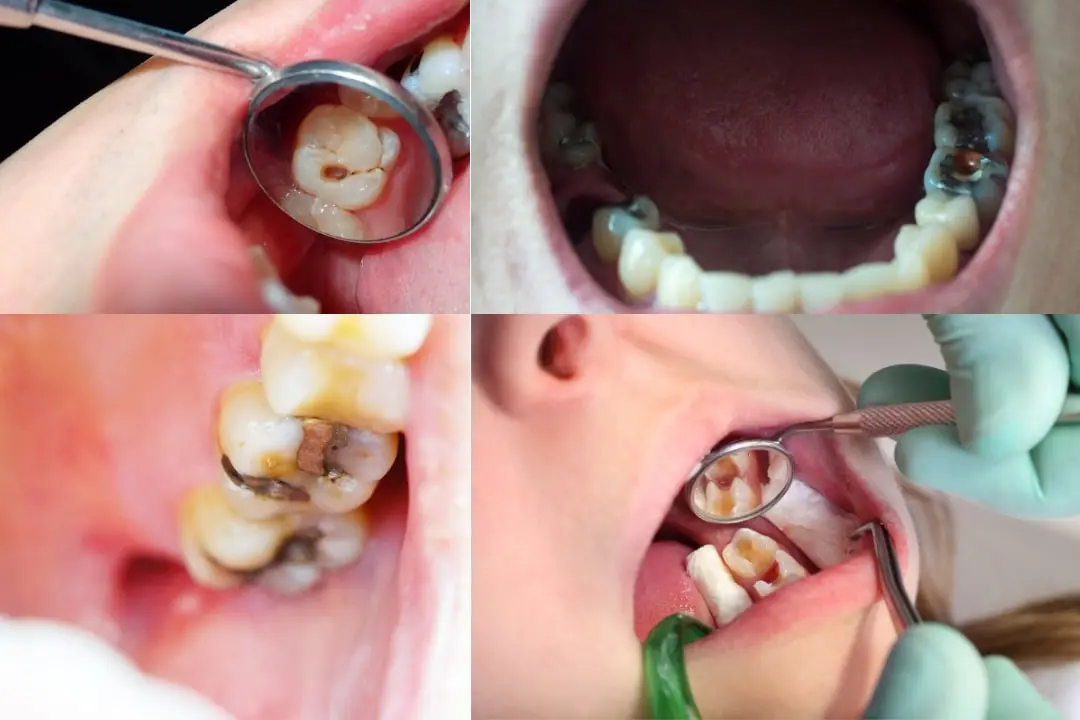Why does my tooth filling hurt after months?
Experiencing pain months after a dental filling is often unexpected and uncomfortable. So, is it possible to understand why a dental filling hurts after months?

Dental fillings are common treatment methods used to repair damaged or decayed teeth. However, sometimes problems can arise in the tissues surrounding the filled tooth or in the tooth itself after these procedures. There may be several possible reasons for this, such as incorrect placement of the filling or infection in the area.
When you experience such situations, the first step to finding relief is to consult a dentist. Your specialist can determine the source of the pain and recommend appropriate treatment methods. While pain after a filling can be a significant problem, these problems can usually be resolved with the right treatment, ensuring a comfortable treatment process.
Reasons why my tooth filling hurts even after months
Experiencing prolonged pain in your tooth after a filling is surprising for many people. Understanding the possible causes of this discomfort can help you identify the source of the problem.
Tooth sensitivity and persistence
Pain after a dental filling is often caused by tooth sensitivity. Hot or cold foods and drinks can stimulate the area where the filling was placed and increase sensitivity. This can be caused by exposure of the dentin layer on the inside of the tooth or minor irritation following the procedure. Although sensitivity decreases over time, it can sometimes develop into persistent pain, in which case intervention from your dentist may be required.
Misalignment of the bite
Another common cause is bite misalignment due to incorrect placement of the filling. If your new filling is not placed in accordance with your bite alignment or is too high, excessive pressure can be applied to the filled tooth during chewing. This can cause pain and sensitivity that persists over time. If you feel pain in your tooth during chewing after a filling or notice an irregularity in your bite, it is important to see a dentist. Your dentist can relieve these discomforts by aligning your filling correctly.
Tooth decay around the filling
New decay, especially around the edges of a filling, can affect the sensitive structure of the tooth and cause pain. If all decayed tissue isn't removed during treatment or if post-filling hygiene isn't maintained, bacteria can accumulate in the area.

Over time, when bacteria reach the nerve tissue of the tooth, symptoms such as severe pain, throbbing, a feeling of pressure, or swelling can occur. This carries the risk of infection. Ignoring these symptoms can lead to more serious problems, so pain felt even months after a filling should be evaluated.
Cracked fillings or dental problems
You might be surprised when a tooth with a filling starts to hurt again over time. However, this can often be due to small, unnoticeable cracks or structural deterioration in the filling itself. Daily chewing can weaken the filling over time or cause tiny fractures. These structural problems allow oral bacteria to infiltrate the tooth.
If the filling is loose, cracked, or the tooth itself is damaged, you may experience sensitivity to hot and cold, sudden aches, or a throbbing pain. These symptoms could be related not only to a mechanical problem but also to a potential infection. Even if the pain comes and goes, it's important to take this condition seriously.
Allergic reaction to filling material
In very rare cases, pain after months of use can be caused by an allergic reaction. Some individuals may exhibit an immune system reaction to the metal alloys or composite materials used in fillings. This sensitivity can manifest as discomfort, mild swelling, or irritation around the tooth.
Tooth sensitivity
Sensitivity after a dental filling is generally common. However, some patients may experience sensitivity to hot, cold, or sweet foods and drinks even months after the filling is placed. This sensitivity can be caused by the nerves in the tooth healing process and is usually temporary. However, sometimes this sensitivity can persist for a longer period of time, indicating a more serious problem.
If the filling is placed near a nerve, the sensitivity may last longer. In this case, specially formulated toothpastes can alleviate the pain. Another solution may be specialized treatments recommended by your dentist.
What should you do if your filling hurts after months?
Dental filling is a treatment to repair damaged teeth and is usually applied to relieve pain. However, sometimes pain can be felt even months after the filling procedure. This can often be prevented and managed. There are some simple solutions to reduce pain and prevent discomfort after a dental filling.

Troubleshooting bite problems
One of the most common causes of pain after a filling is an imbalance in bite alignment. If the filling is too high or not placed properly, pressure can be applied to the tooth during chewing. This can lead to pain and discomfort. Your dentist can address this problem by checking the bite and adjusting the alignment of the filling so that the pain disappears.
Managing sensitivity
Sensitivity to temperature changes after a dental filling is also a common problem. Hot and cold foods and drinks can stimulate the tooth. Your dentist can alleviate this by recommending desensitisation products and toothpastes. These products reduce sensitivity to hot and cold substances by protecting the exposed dentin areas of the tooth.
Do not neglect dental check-ups
If you experience pain after a filling, it is important to contact your dentist. The dentist can help the treatment process by identifying the source of the pain.
Root canal treatment
If the filled tooth has nerve pain, this may be a sign of a more serious problem. Deep decay or fillings near the nerve can cause pain. Root canal treatment can provide relief in these cases, relieving pain while preserving the tooth.
Collaborating with your dentist to prevent and manage pain after a dental filling can reduce sensitivity in the filled area and provide long-term relief.
How can you prevent filling pain after months?
Long-term pain may occur after a tooth filling. Such discomfort is usually caused by simple factors that need attention. There are several practical steps you can take to keep your teeth comfortable and healthy.
- To prevent pain after dental filling, it is very important to have adequate oral and dental hygiene. By brushing and flossing every day, you can prevent plaque and food build-up around your teeth.
- Fillings can sometimes cause sensitivity when they come into contact with hot, cold or sweet foods. In this case, it may be helpful to use toothpastes specially formulated for sensitive teeth.
- Filled teeth can be sensitive to extremely hot and cold, acidic or sugary foods and drinks. Avoiding such foods will prolong the life of your filling by keeping the filling area healthy.
- Pain after dental filling can be prevented by regular dental check-ups to prevent small problems from getting bigger. Your dentist can review the condition of your filling and intervene early if there are any problems.
- After the filling, your dentist will give you special care instructions regarding the treatment process. By following these instructions, you can speed up the healing process and have a comfortable recovery.
What happens if I don't treat a toothache caused by a filling?
Toothache that occurs after a filling should not be ignored, as an untreated problem can lead to potentially serious health problems:
- Risk of infection: Failure to completely clean a cavity or treat damaged fillings can lead to infection. This infection can cause swelling and extreme sensitivity.
- Abscess formation: Untreated tooth infections can lead to an abscess (a collection of pus). This is a painful condition that requires immediate treatment. Antibiotics and sometimes surgery may be necessary.
- Tooth loss: Infections resulting from untreated tooth damage can destroy the inner tissue and root of the tooth, leading to tooth loss.
- Health risks: Untreated filling-related infections can spread through the bloodstream to other parts of the body and damage vital organs such as the heart or brain.
- Increased treatment costs: If pain from a dental filling is not treated promptly, more expensive additional procedures such as root canal treatment or tooth extraction may be necessary.
Take action to relieve tooth filling pain
Pain after a dental filling can cause long-term discomfort. The cause can be due to many factors, including sensitivity, misalignment of the bite, or a damaged filling. Ignoring this can exacerbate the problem.
Don't put off dental filling-related pain; timely intervention can prevent more serious problems and help you regain a healthy smile. Take the first step toward pain-free dental treatment by making an appointment at our Wink Smile Turkey dental clinic in Antalya today!

